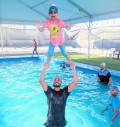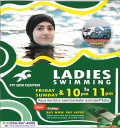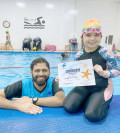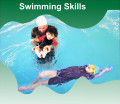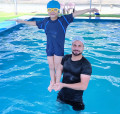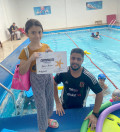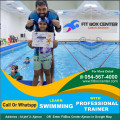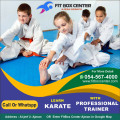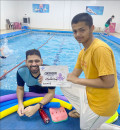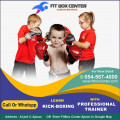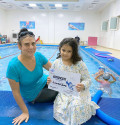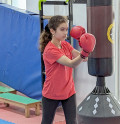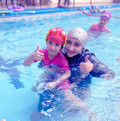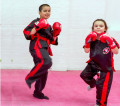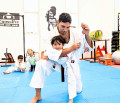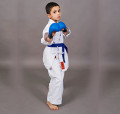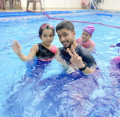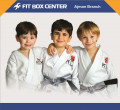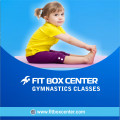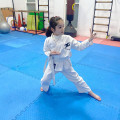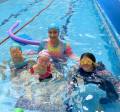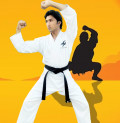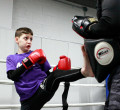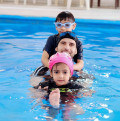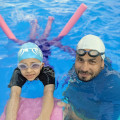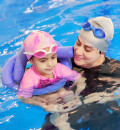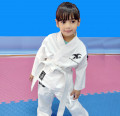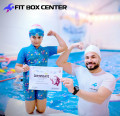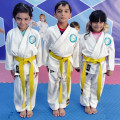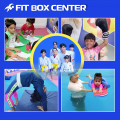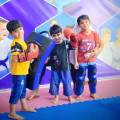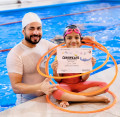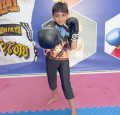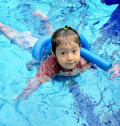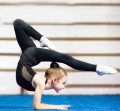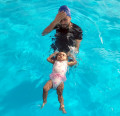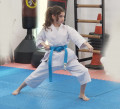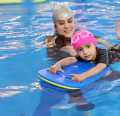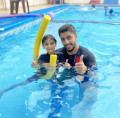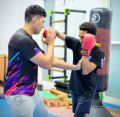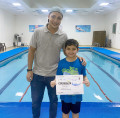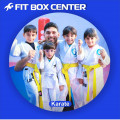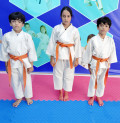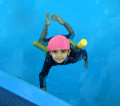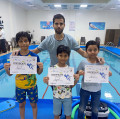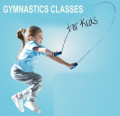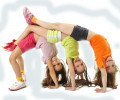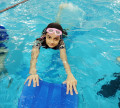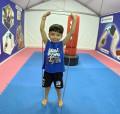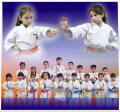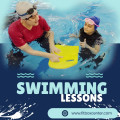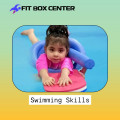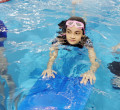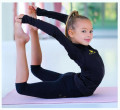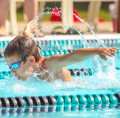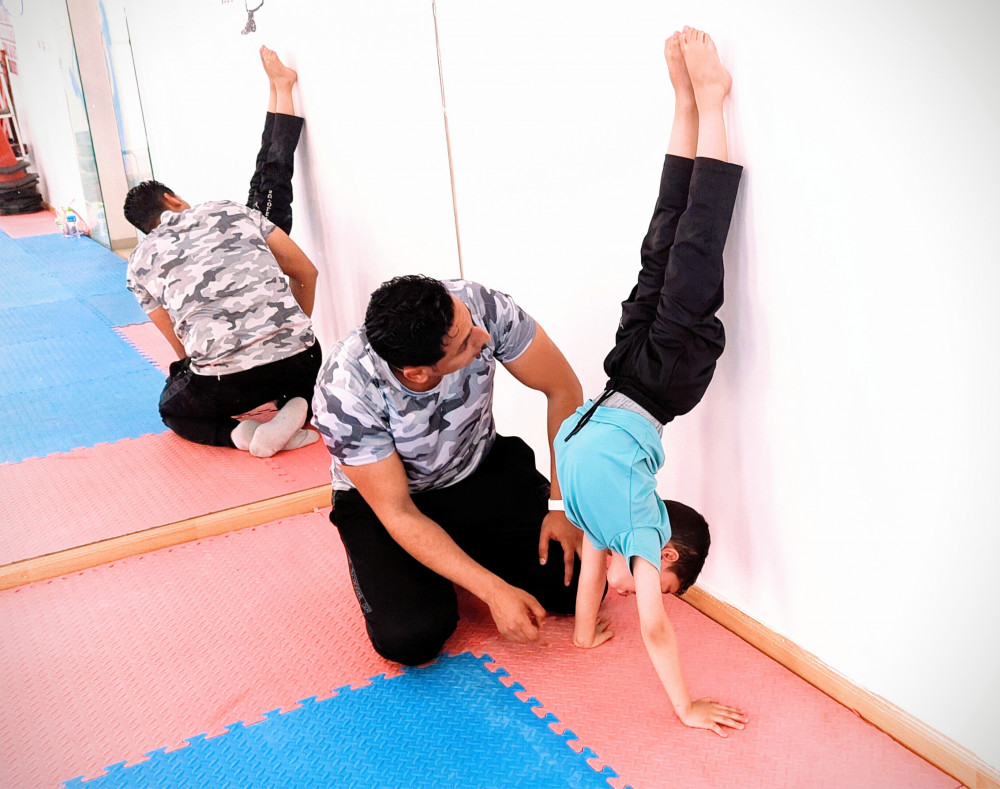
A handstand is a skill in which a person balances their body in an inverted vertical position
2024-09-19 - gymnasticIntroduction
Gymnastics is an excellent sport for kids, helping them build strength, coordination, and confidence. One of the most exciting and foundational skills in gymnastics is the handstand. But learning how to stand on your hands isn't just about balancing upside down—it’s about mastering control, discipline, and physical strength. In this article, we’ll guide you through how kids can safely and effectively learn to perform handstands, along with the many benefits this skill offers.
Understanding the Basics of Handstands
What is a Handstand?
A handstand is a skill in which a person balances their body in an inverted vertical position, with their hands planted firmly on the ground. The goal is to maintain balance while keeping the body straight and aligned.
Key Elements of a Proper Handstand
Hand Placement: Hands should be shoulder-width apart, fingers spread wide for stability.
Body Alignment: The body should form a straight line from the wrists to the toes, with no arching in the back.
Core Engagement: A strong core is essential for maintaining balance.
Focus: Concentration and maintaining a focus point on the floor helps with stability.
Benefits of Learning Handstands for Kids
Physical Development
Handstands help kids build strength in their arms, shoulders, core, and back muscles. They also improve coordination, flexibility, and balance.
Mental Benefits
Learning to handstand can increase a child's focus and discipline, helping them stay determined when practicing new skills.
Boosting Confidence and Discipline
Achieving a successful handstand gives kids a huge sense of accomplishment, boosting their self-esteem and encouraging them to keep pushing their limits.
Safety Measures Before Attempting Handstands
Proper Warm-Up Exercises
Before attempting any gymnastics move, especially handstands, it’s crucial to warm up. Kids should focus on stretching their wrists, shoulders, and back.
Use of Safety Mats and Spotting
Using mats and having someone spot them is key to preventing injuries. Spotting ensures that if they fall, it will be safely controlled.
Supervision and Guidance
Always have an adult or a coach supervise kids as they practice. It’s essential to correct form and provide support when necessary.
Essential Strength-Building Exercises
Core Strengthening Workouts
Exercises like planks and hollow holds help kids build the core strength needed to maintain a handstand.
Shoulder and Arm Exercises
Push-ups and pike holds can help strengthen the shoulders and arms, essential for supporting body weight during a handstand.
Flexibility and Balance Training
Kids should also work on their flexibility with stretches for the hamstrings and back, alongside practicing balance with one-legged stands or balance beam exercises.
Progressive Steps to Learn Handstands
Starting with Basic Balance Exercises
Before jumping straight into a handstand, kids can start by practicing basic balance drills like standing on one leg or practicing cartwheels.
Wall-Assisted Handstands
One of the best ways to practice is by doing handstands against a wall. This provides support while kids build strength and confidence.
Free-Standing Handstands
Once kids feel comfortable with wall-assisted handstands, they can move on to free-standing ones. This is where core strength and balance come into play.
Breaking Down the Handstand Technique
Proper Hand Placement and Body Alignment
Hands should be shoulder-width apart, and the body should form a straight line from the wrists to the toes, keeping the core tight.
Engaging the Core Muscles
To hold a handstand, the core must be engaged throughout. A weak core will lead to loss of balance.
Holding the Handstand
Start with short holds and gradually increase the duration as balance and strength improve.
Common Mistakes and How to Avoid Them
Overarching the Back
One of the most common mistakes is overarching the back, which can lead to loss of balance. Focus on engaging the core to maintain a straight line.
Poor Wrist Placement
If the wrists are not aligned correctly, it can lead to instability. Kids should practice placing their hands shoulder-width apart with fingers spread wide.
Not Engaging the Core Enough
Without a strong core, kids will struggle to maintain a straight and controlled handstand. Core exercises can help overcome this issue.
Fun Drills for Kids to Master Handstands
The Handstand Walk
Kids can practice walking on their hands once they feel comfortable holding a handstand. This fun activity improves balance and coordination.
Partner-Assisted Handstands
Having a partner to help with balance can make handstands more fun and less intimidating for beginners.
Fun Games that Encourage Balance
Games like handstand races or obstacle courses can make learning handstands more engaging for kids.
The Role of Consistency and Practice
Why Daily Practice is Crucial
Like any skill, mastering the handstand requires consistent practice. Kids should aim to practice handstands daily to build strength and improve balance.
Tracking Progress with Achievable Goals
Setting small goals, like holding a handstand for 5 seconds, can keep kids motivated as they improve.
Encouraging a Positive Attitude
Fostering Resilience Through Challenges
Learning handstands takes time and patience. Encourage kids to embrace the challenges and learn from their mistakes.
Celebrating Small Victories
Every milestone, from holding a handstand for a few seconds to balancing without support, should be celebrated to keep kids motivated.
The Role of Parents and Coaches
How Parents Can Support at Home
Parents can encourage practice by providing a safe space, offering positive reinforcement, and helping kids track their progress.
The Importance of Professional Coaching
A trained gymnastics coach is vital for ensuring kids learn proper technique, stay safe, and progress at a healthy pace.
Transitioning to Advanced Gymnastic Skills
From Handstands to Cartwheels and Flips
Once kids master handstands, they can easily transition to more advanced gymnastics skills like cartwheels, round-offs, and flips.
How Mastering Handstands Builds a Foundation for More Complex Skills
Handstands are a building block for many advanced gymnastics moves. By mastering this skill, kids set a strong foundation for future success in gymnastics.
.






















































